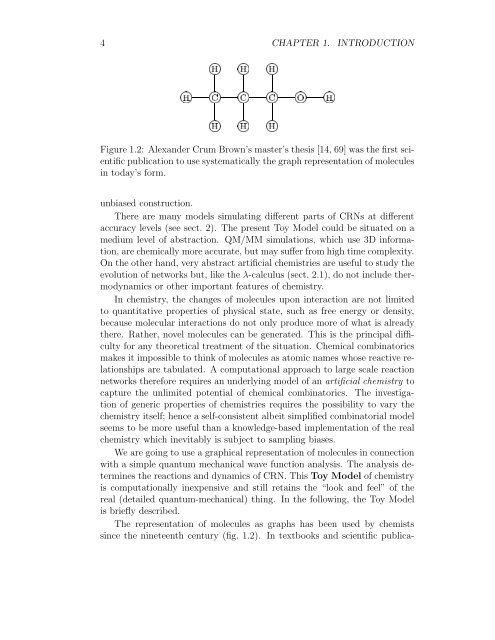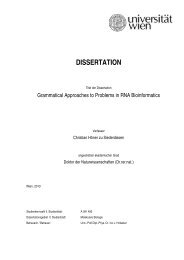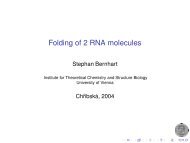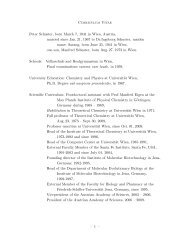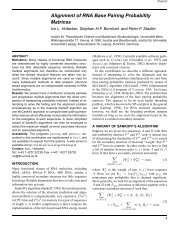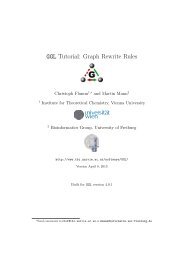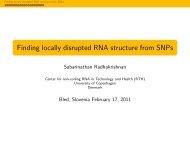A Toy Model of Chemical Reaction Networks - TBI - Universität Wien
A Toy Model of Chemical Reaction Networks - TBI - Universität Wien
A Toy Model of Chemical Reaction Networks - TBI - Universität Wien
Create successful ePaper yourself
Turn your PDF publications into a flip-book with our unique Google optimized e-Paper software.
4 CHAPTER 1. INTRODUCTION<br />
¡ ¡ ¡<br />
¢ ¢<br />
¡ £ ¡<br />
¢<br />
¡ ¡ ¡<br />
Figure 1.2: Alexander Crum Brown’s master’s thesis [14, 69] was the first scientific<br />
publication to use systematically the graph representation <strong>of</strong> molecules<br />
in today’s form.<br />
unbiased construction.<br />
There are many models simulating different parts <strong>of</strong> CRNs at different<br />
accuracy levels (see sect. 2). The present <strong>Toy</strong> <strong>Model</strong> could be situated on a<br />
medium level <strong>of</strong> abstraction. QM/MM simulations, which use 3D information,<br />
are chemically more accurate, but may suffer from high time complexity.<br />
On the other hand, very abstract artificial chemistries are useful to study the<br />
evolution <strong>of</strong> networks but, like the λ-calculus (sect. 2.1), do not include thermodynamics<br />
or other important features <strong>of</strong> chemistry.<br />
In chemistry, the changes <strong>of</strong> molecules upon interaction are not limited<br />
to quantitative properties <strong>of</strong> physical state, such as free energy or density,<br />
because molecular interactions do not only produce more <strong>of</strong> what is already<br />
there. Rather, novel molecules can be generated. This is the principal difficulty<br />
for any theoretical treatment <strong>of</strong> the situation. <strong>Chemical</strong> combinatorics<br />
makes it impossible to think <strong>of</strong> molecules as atomic names whose reactive relationships<br />
are tabulated. A computational approach to large scale reaction<br />
networks therefore requires an underlying model <strong>of</strong> an artificial chemistry to<br />
capture the unlimited potential <strong>of</strong> chemical combinatorics. The investigation<br />
<strong>of</strong> generic properties <strong>of</strong> chemistries requires the possibility to vary the<br />
chemistry itself; hence a self-consistent albeit simplified combinatorial model<br />
seems to be more useful than a knowledge-based implementation <strong>of</strong> the real<br />
chemistry which inevitably is subject to sampling biases.<br />
We are going to use a graphical representation <strong>of</strong> molecules in connection<br />
with a simple quantum mechanical wave function analysis. The analysis determines<br />
the reactions and dynamics <strong>of</strong> CRN. This <strong>Toy</strong> <strong>Model</strong> <strong>of</strong> chemistry<br />
is computationally inexpensive and still retains the “look and feel” <strong>of</strong> the<br />
real (detailed quantum-mechanical) thing. In the following, the <strong>Toy</strong> <strong>Model</strong><br />
is briefly described.<br />
The representation <strong>of</strong> molecules as graphs has been used by chemists<br />
since the nineteenth century (fig. 1.2). In textbooks and scientific publica-


